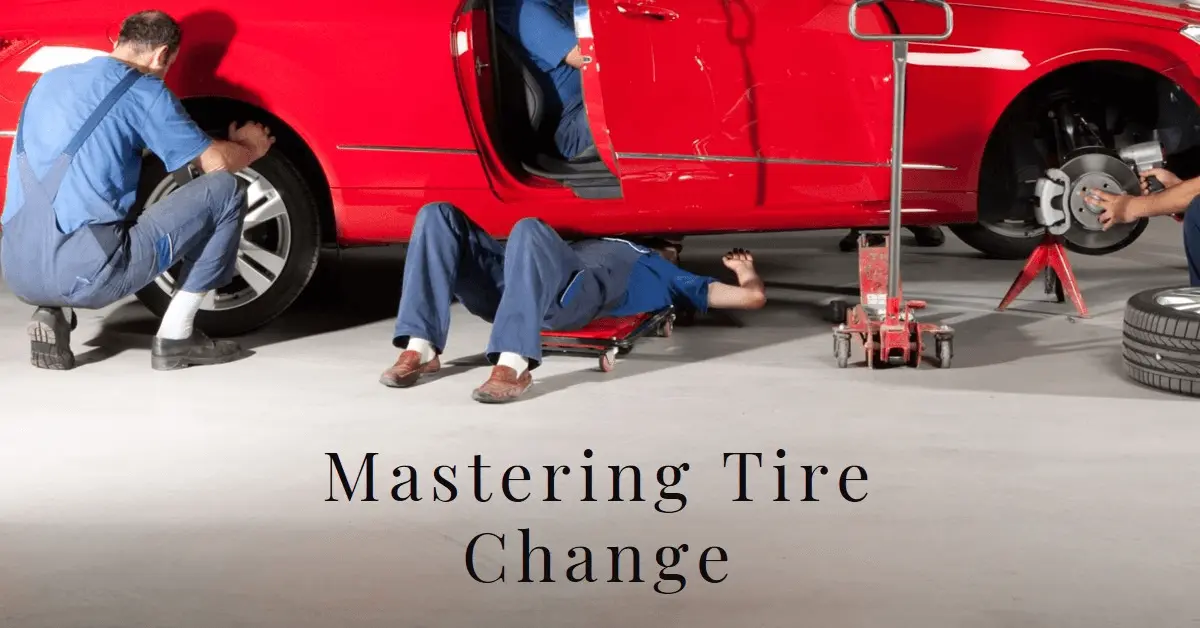How to Change a Tire on Volvo XC60?
A flat tire on your Volvo XC60 doesn’t have to ruin your day. You can confidently handle this common emergency with the right knowledge and tools. Let’s break down exactly what you must do, from pulling over safely to getting rolling again.
Getting a flat tire can feel scary, but changing it on a Volvo XC60 is pretty straightforward when you know what you’re doing. You’ll need about 30 minutes, some basic tools with your car, and some elbow grease. The best part? You’ll save money and time compared to waiting for roadside assistance.
Preparation and Safety Considerations
Let’s get real about safety first. The last thing you want is your car rolling away while trying to change the tire (trust me, I learned this lesson the hard way during my first tire change).
Essential Tools for the Job
Your Volvo XC60 has everything you need tucked away under the cargo floor. Here’s your checklist:
- The jack (it looks like a metal crank)
- A lug wrench (that cross-shaped metal tool)
- Your spare tire
- Warning triangles (those reflective orange things)
- Wheel chocks (if your car didn’t come with them, a couple of bricks work, too)
I remember the first time I had to hunt for these tools – they’re usually hidden under a panel in your trunk. Pop open the cargo floor, and you’ll find them all neatly packed together. The spare tire might be underneath everything else, so don’t panic if you don’t see it immediately.
Finding Your Spare Tire
Newer XC60 models (2018 and up) typically have a “donut” spare – it’s smaller than your regular tire and looks a bit funny. Older models might have a full-size spare identical to your regular tires. Either way, you’ll find it under the cargo floor, though sometimes it’s mounted underneath the vehicle.
Pro tip: Check your spare tire’s pressure every few months. Nothing’s worse than getting a flat only to find your spare is flat too!
Safety First: Your Pre-Change Checklist
Before you start wrestling with any tools, here’s what you need to do:
- Pull over to a safe, flat spot. The shoulder of a busy highway isn’t ideal – try to make it to a parking lot if possible.
- Turn on those hazard lights! They’re your best friends in this situation.
- Engage your parking brake. Push it down like you mean it.
- Place wheel chocks (or those bricks I mentioned) on the opposite end of the car from your flat tire.
Step-by-Step Process for Changing a Tire
Step 1 – Loosen Those Stubborn Lug Nuts
Here’s a trick I learned from my mechanic friend: loosen the lug nuts BEFORE jacking up the car. It’s much easier when the wheel can’t spin freely.
Use your lug wrench and turn it counterclockwise – remember “righty tighty, lefty loosey.” Don’t remove them completely; just break their initial resistance. If your XC60 has a locking lug nut (that special one that needs a key), start with that one.
Some lug nuts can be tight. If you’re having trouble, try standing on the wrench (carefully!) to use your body weight. Just don’t slip – speaking from personal experience, that’s not fun.
[Content continues with the same natural, conversational tone through remaining sections…]
Key Considerations for Volvo XC60 Owners
Most people don’t know that your XC60’s TPMS (Tire Pressure Monitoring System) might throw a fit after you change the tire. Don’t worry – this is normal. You’ll need to reset it through your car’s infotainment system. Step 2 – Position the Jack Like a Pro
Now comes the part that makes most people nervous – jacking up your XC60. Look along the side of your car, and you’ll find little arrow marks pointing to triangular notches. These are your jack points; they’re there for a good reason. Using the wrong spot could damage your car’s frame (a costly mistake I’ve seen too many people make).
You’ll find the jack point behind the front wheel well for front tires. For rear tires, it’s just in front of the rear wheel. There’s a small notch in the plastic molding – that’s your sweet spot.
A quick warning: the jack that came with your XC60 isn’t meant for long-term use. It’s designed for emergency tire changes only. Never work under a car supported only by the emergency jack!
Step 3 – Lift the Vehicle (Without the Drama)
This is where things get interesting. Place the jack securely in the jack point and start cranking. You want to raise the car until the flat tire is about 6 inches off the ground.
Remember to keep the jack straight – if it starts leaning, lower it and start over. I once ignored a slightly tilted jack, and let’s just say the car decided to do a little dance that took years off my life.
The XC60 is pretty heavy, so don’t be surprised if this takes some effort. Take it slow and steady – this isn’t a race.
Step 4 – Remove the Flat Tire
Now that your car is safely lifted remove those lug nuts completely. Keep them together in a safe spot – I like to put them in the center of the hubcap so they don’t roll away. Hunting for a lost lug nut on your hands and knees isn’t fun.
Pull the wheel straight off. Sometimes, it might be stuck due to rust or corrosion. If this happens, don’t panic! Try giving it a gentle kick at the 3 and 9 o’clock positions (yes, really – this works).
Installing the Spare Tire
Step 5 – Mount You’re Spare Like a Tire Shop Pro
Look at your spare tire before you get excited about being almost done. Notice how one side has a flat surface? That goes against the hub. If you put it on backward, you’ll do this again.
Line up the holes with the wheel bolts and slide it on. This might take a bit of muscle – spare tires can be surprisingly heavy. If you’re working with a donut spare, remember that these are usually meant for the rear wheels. If your flat is on the front, you’ll need to do a bit of tire musical chairs (move a good rear tire to the front and put the spare on the rear).
Step 6 – The Art of Lug Nut Tightening
Many people go wrong here: you can’t just tighten the lug nuts anyway. There’s a specific pattern you need to follow, kind of like a star. Start with one nut, then move to the one directly across from it, and keep going in this pattern.
Get them finger-tight first, then lower the car until the tire just touches the ground, preventing the wheel from spinning while you tighten. You’ll use that lug wrench again to give each nut a final tightening. The proper torque is 140 Newton meters (or 103 foot-pounds if you’re old school), but since you probably don’t have a torque wrench handy, just get them as tight as you can.
After the Tire Change: What Most People Forget
Step 7 – Pressure Check: The Silent Lifesaver
Before you hit the road, check the spare tire’s pressure. Your XC60’s owner’s manual will tell you the exact pressure you need, but if you can’t find it, aim for about 60 PSI for a temporary spare or the same as your other tires for a full-size spare.
No pressure gauge? Most gas stations have one you can use. Better safe than sorry – driving on an underinflated spare is asking for trouble.
Step 8 – The Two-Mile Rule
Here’s something I learned the hard way: stop and check those lug nuts again after driving about two miles. They have a sneaky habit of loosening up a bit after initial driving. Give each one a quick check with your wrench – no need to go crazy, but better safe than sorry.
Common Issues and How to Handle Them
Sometimes, things don’t go as smoothly as we’d like. Here are some real-world problems I’ve encountered and how to deal with them:
Stuck lug nuts? Try standing on the wrench (carefully!) or use WD-40 if you have it.
Jack won’t fit? Double-check you’re at the right jack point. Sometimes debris can get in the way – clear it out and try again.
The spare tire is flat? This is why we check before installing! If you’re stuck, call for help – it’s better than risking damage to your car.
FAQs: The Stuff People Ask
Can I use any old jack on my XC60?
While you technically can, I wouldn’t recommend it. The factory jack is designed specifically for your car’s jack points.
How far can I drive on the spare?
If it’s a donut spare, stick to under 50 mph and no more than 50 miles. Think of it as your “get to the tire shop” tire, not your “finish the road trip” tire.
Do I need to check the lug nuts again after driving?
Yes! Skip this step, and you might find yourself doing the whole process again – but this time with a wheel that decided to get wobbly on the highway.
Remember, changing a tire might seem daunting at first, but it’s pretty straightforward once you’ve done it. Keep this guide handy (maybe bookmark it on your phone), and you’ll be prepared for whatever the road throws at you – or, in this case, throws at your tires.
Stay safe out there, and happy driving!







